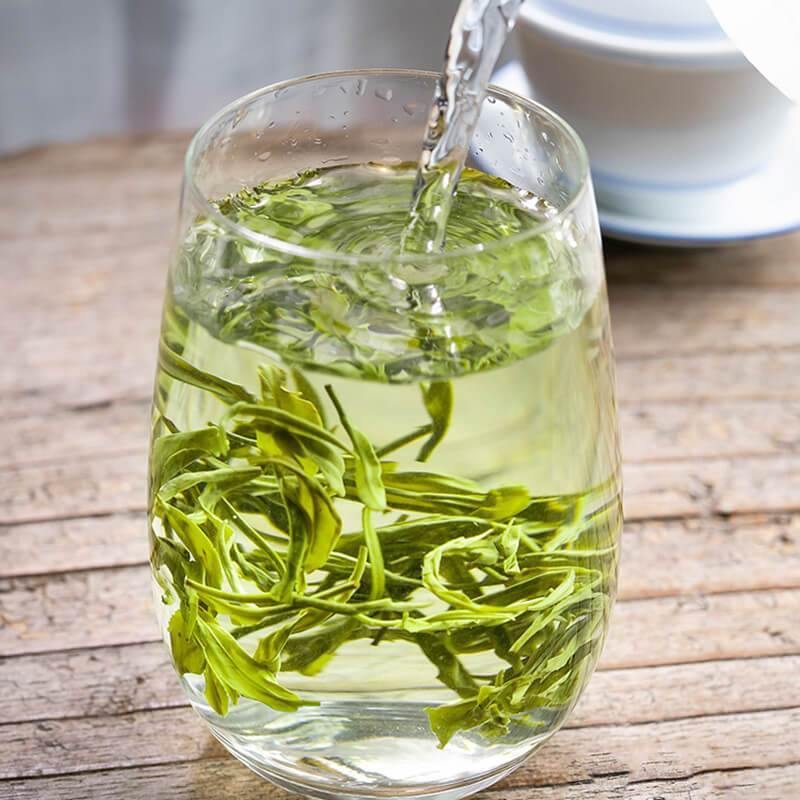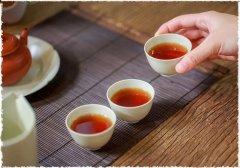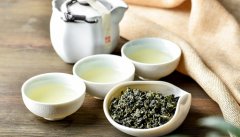How to deal with the aroma of black tea? how to ferment and produce floral aroma? several methods of extracting fragrance from tea.
We often discuss the importance of harvest dates in determining tea quality, with emphasis on spring harvests, especially for lightly oxidized tea. In fact, the impact of harvest date is inseparable from another quality signal that is more easily seen in finished tea: picking criteria.
Spring harvested teas are very valuable, especially green and white teas, because they include the youngest leaf buds and the earliest growing leaves of the year. High-quality green and white teas consist only of budding buds, carefully hand-picked from last year's mature flowers. Although the early picking dates made the quality of these teas possible, it was the selection criteria set by talented tea pickers that ultimately shaped the natural sweetness and smooth taste of spring tea.
However, not all teas are made with these tender buds and taste best. The tea maker's craft for making tea leaves is tailored to the picking standards of each traditional tea. In some categories, the choice of leaves is a major factor in determining the highest grade of daily drinking. In other countries, picking standards are relatively uniform and quality levels are determined by other factors.
For tea consumers, knowing the correct picking criteria for each tea can be complicated. Each category has its own set of rules, which are often complicated by regional differences or personal preferences. Of course, quality ultimately depends on what tastes good, but since picking criteria often determine the amount of tea available, a basic understanding of tea can help demystify market demand and pricing.
green tea
Because they are oxidized to a small extent, the quality of any green tea depends largely on the quality of the tea leaves picked. As briefly mentioned above, high-quality green tea includes only the earliest spring growth, consisting of small buds and leaves. These young leaves, much like spinach and arugula, are sweeter and more tender than the mature leaves on the stem. They are also very limited in number, appearing only once a year during the very short harvest season.
The buds and top leaves of the plant are picked throughout the spring, and the size of the buds and leaves increases as the harvest date is delayed. As temperatures rise and sunlight increases, plants grow faster and produce more polyphenols and methylxanthines, which taste astringent and bitter. The most abundant crops harvested in summer also contain the most of these compounds.
Many types of green tea exist between these two extremes, with different balances between the natural sweetness of early spring and the fruity fruity fruits of late ripening. An unusual example is Lu 'an Guapian, which is grown further north than other popular green teas in China. Cooler climates slow tea growth and prevent dry, bitter flavors, so tea makers in the region prefer to use the second and third leaves of the spring harvest rather than the more typical buds. The result is significantly richer than other spring teas, and without the natural sweetness that is usually sacrificed.
white tea
Another of the least processed teas, white tea uses similar picking standards as green tea. In fact, since the drying and finishing process of white tea uses only mild temperatures and there are fewer variations in the production process, the differences between picking standards may be more pronounced. The highest grade of traditional white tea is called silver needle tea, which uses only closed buds that grow in early spring. For harvest in late spring, you can mix buds and top leaves, such as white wood dan, or choose only larger, open leaves, such as Shoumei.
The highest grade of white tea gives this category its name because the buds of the large white ("big white") variety are covered with furry hairs, giving them a white color. However, as with green tea, these early-harvested teas are available in limited quantities, while the vast majority of white tea on the market is made up of more mature teas. Although picking standards play an important role in the overall quality of white tea, the origin of these teas is equally important, and this small area of Fuding County in Fujian Province is the most authentic and valuable.

oolong tea
Within this broadly defined category, the vast diversity of regional styles has its own selection criteria, so it is difficult to generalize any guidelines. Fortunately, the quality of oolong tea usually depends more on the origin, variety and processing technique-harvest date and picking criteria are still important, but not as important as other varieties.
Having said that, we can make some general statements about the criteria in this category. In general, the more intensive processing steps used in oxidizing and roasting tea are best applied to slightly ripened tea leaves. Although in the early stages of slow growth, new leaves in spring are still valued for the depth of their fragrance, they take longer to mature on the plant. Picking criteria target secondary, tertiary and occasional extra leaves-only the greenest oolong usually includes bud sets.
The selection of lower leaves can also include parts of stems; Taiwan oolong tea usually uses the newly grown intact form, with buds fixed during processing and top leaves and stems remaining intact. However, the effect of stems on quality is controversial and ultimately comes down to personal preference. While competing teas typically use leaves trimmed from the stems to get a more "pure" flavor, we like the extra complexity the stems bring. However, it is worth noting that many stems without leaves can produce bitter tastes.
black tea
The range and diversity of black tea styles also makes it difficult to define a single picking standard. In this case, the optimal harvest date and choice of tea leaves largely depends on the origin of the tea, as black tea grows in many different climatic conditions. Moreover, the worldwide popularity of black tea means that consumers have a wide variety of taste preferences: Chinese black tea drinkers tend to focus on smooth taste and natural sweetness, while British black tea drinkers prefer bold taste that can withstand milk and sugar.
Different leaf choices highlight the effects of oxidation, though, which can help decide when to buy. The plant's smallest buds turn bright golden when fully oxidized, while mature leaves turn the more familiar "black" color. Traditional Chinese black tea contains a large number of golden leaf buds. Like green tea and white tea, golden leaf buds have natural sweetness and rich taste. Mature black tea can be produced in large quantities and has historically been the preferred choice for export, usually producing more astringent flavors.
However, whatever the criteria for picking, the bitterness and astringency of black tea can be tempered by climate and careful craftsmanship. For example, black tea grown in Taiwan has less sunlight and grows slower than traditional areas in southern China, thus producing a sweeter taste. In addition, industrial techniques for harvesting, oxidizing and roasting black tea for mass market use may exacerbate bitterness and astringency due to rough handling or breakage of the tea leaves. Traditional hand-made teas, processed more gently, generally taste better.
PU 'er tea
Coupled with the variables of fermentation and aging, Pu 'er tea can be said to be the most diverse tea type, and there is little consensus on the "best" taste of Pu' er tea. Some puer tea drinkers prefer the dry, fresh taste of unfermented, young puer tea, while others prefer the rough, peat taste of fast-fermented, long-lived puer tea, and still others prefer the complex taste of ripe, raw puer tea. Of course, whether it is tea makers or consumers, their picking standards are also different.
With these instructions, the leaf selection for each puer tea can reveal something about the type of flavor to expect. As with black tea,"small-leaf" Pu 'er tea, commonly referred to as "emperor tea" or "imperial tea," is made from early-harvested tea leaves, which are generally richer in taste due to their higher carbohydrate content. These teas are easier to pick from the well-manicured hedges of planted tea plantations and are often used to make full-bodied longevity teas. On the other hand,"big leaf tea" is often called "wild tea" because they are picked from plants that are allowed to grow into small trees and produce a crisp astringent taste that is well suited to fermentation.
Branch inclusion may also be a controversial topic in Pu 'er production, but ultimately it comes down to personal preference. Small-leaf puer tea from carefully managed farms is less likely to have stems, both because harvesting is easier to control and because the emphasis of tea is on the smooth texture of carbohydrate-rich leaves. Large-leaf puer tea is more likely to include stems to add complexity and depth, but as with other styles, leaves are more numerous than stems in the finished tea.
Important Notice :
前街咖啡 FrontStreet Coffee has moved to new addredd:
FrontStreet Coffee Address: 315,Donghua East Road,GuangZhou
Tel:020 38364473
- Prev

The technological process of how black tea is processed illustrates the whole fermentation process of black tea.
Although there are many variables that affect the final taste of tea in the process of making tea, oxidation is arguably the most influential step. From the beginning of tea picking, with the rupture of the cell wall, oxidation occurs, and the enzymes in the tea are exposed to oxygen in the air. The tea begins to turn brown until it is heated, the active enzyme denaturates and maintains the required oxidation level in the finished tea. What we did today
- Next

What are the effects and functions of drinking top ten famous teas? what kind of tea do women with heavy cold and damp body drink?
We all know what it feels like to be stressed: our heart beats faster, our breathing speeds up, our muscles become tense, and we may start to sweat. All of this is the way our bodies prepare to fight or escape from danger, triggered by cortisol and other stress hormones released in the brain. Unfortunately, our bodies also respond to perceived threats in this way, and we both
Related
- Beginners will see the "Coffee pull flower" guide!
- What is the difference between ice blog purified milk and ordinary milk coffee?
- Why is the Philippines the largest producer of crops in Liberia?
- For coffee extraction, should the fine powder be retained?
- How does extracted espresso fill pressed powder? How much strength does it take to press the powder?
- How to make jasmine cold extract coffee? Is the jasmine + latte good?
- Will this little toy really make the coffee taste better? How does Lily Drip affect coffee extraction?
- Will the action of slapping the filter cup also affect coffee extraction?
- What's the difference between powder-to-water ratio and powder-to-liquid ratio?
- What is the Ethiopian local species? What does it have to do with Heirloom native species?

